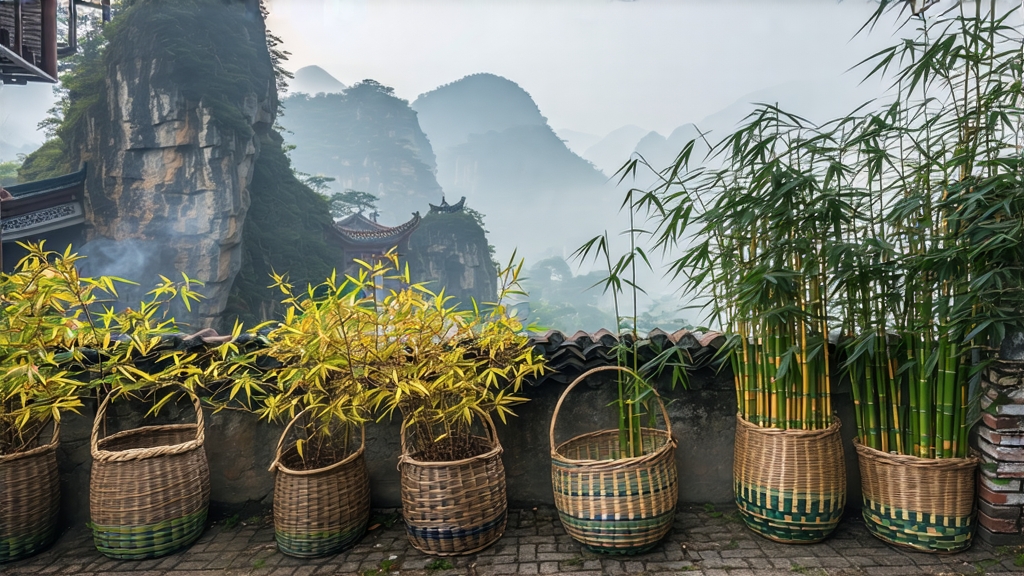
Tucked high in the mist-veiled Dabie Mountains of western Anhui Province, a tea once reserved for emperors still quietly resists the march of time. Huoshan Huangya—literally “Yellow Buds of Huoshan”—is the least-known member of China’s six great tea families, yet its mellow nectar carries the full weight of thirteen centuries of court chronicles, secret craft, and mountain terroir. To understand this leaf is to witness alchemy: green tea that deliberately loses its verdancy to become something gentler, sweeter, and almost luminous in the cup.
A Brief Imperial Past
The first written record appears in 780 CE when Lu Yu, the “Sage of Tea,” listed Huoshan among the fourteen superior counties in his Classic of Tea. By the Tang dynasty the buds were already pressed into cakes and sent along the imperial courier roads to Chang’an. When cake tea fell from fashion during the Song, Huoshan switched to loose leaf, only to vanish during the Ming tea-tax revolts. The cultivar survived in tiny Buddhist monasteries until 1644, when the Kangxi Emperor, charmed by its jade-yellow liquor, decreed it an annual tribute. Caravan drivers swapped horses for bamboo rafts, floating the chests down the Pi River to the Yangtze, then north to the Forbidden City. With the collapse of the Qing the trade evaporated; the gardens were abandoned to wild tea and chestnut forests. Rediscovery came in 1972 when a team of agronomists followed an old gazetteer map and found ancient trees still clinging to cloud-shrouded cliffs. Cuttings were propagated, charcoal kilns rebuilt, and today fewer than 3 000 kg of authentic Huangya reach the market each spring—less than one day’s output of a single West-Java black-tea factory.
Micro-Terroir and Three Cultivars
Huoshan county sits at 31° north, 800–1 200 m above sea level, where cool air from the Dabie massif collides with humid currents rising off the Yangtze plain. Annual fog exceeds 220 days, filtering sunlight into a soft, bluish spectrum that forces the tea bush to manufacture extra theanine. Soils are quartz-rich yellow granite, acidic (pH 4.8–5.2) and laced with selenium leached from prehistoric volcanic tuff. Only three clones are permitted under the 2003 geographical-indication law: Huoshan Da Yezhong (large-leaf, high floral), Jinji Zhong (golden-branch, milky note), and the rare Shancha Xiaoyezhong (wild small-leaf, alpine menthol). Each is harvested within a five-day window in late March, when two leaves and the unopened bud still wear their winter down, visible under morning light like the finest white velvet.
The Menhuang Process: Making Green Turn Yellow
Unlike green tea, which is rushed to lock in freshness, Huangya is coaxed into a slow oxidation nicknamed menhuang—“sealed yellowing.” The choreography unfolds across four nights and three days.
-
Kill-Green by Hand
Leaves are tumble-fried for 90 seconds on bamboo-lined woks set at 160 °C. The master’s bare fingers flick the leaf mass with a motion borrowed from calligraphy, “writing” the character 茶 (tea) in mid-air. Enzymes are deactivated only 70 %, leaving enough polyphenol oxidase for the later colour shift. -
First Wrapping
The hot leaf is immediately piled into linen sacks (ten kilos each) and buried inside a charcoal-heated bamboo chamber at 38 °C and 85 % humidity. For three hours the leaf “sweats,” chlorophyll begins to break down, and a faint banana-like aroma rises. -
First Baking
Sacks are opened; leaves are spread on ramie screens above a low charcoal ember. Temperature must not exceed 55 °C; the tea master judges readiness by pressing a handful to his cheek—when the veins feel leathery but the tip still snaps, it is time. -
Second Wrapping & Yellowing
The critical step. Leaf is re-bagged, but now only five kilos per sack to intensify micro-fermentation. Over eight hours the pile temperature is allowed to climb naturally to 42 °C. A golden rim appears along the serrated leaf